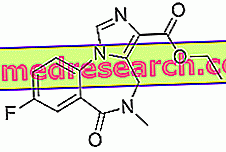Related articles: Trisomy 18
Definition
Trisomy 18 is a genetic disease caused by the presence of an excess chromosome 18 inside the cells.
This anomaly can occur in an absolutely random way: the defect takes place before the conception, inside the gamete (ovule or spermatozoon) of one of the parents, which keeps both copies of chromosome 18 inside the same cell. In fertilization, when the two gametes merge, the resulting embryo will have an excess chromosome 18.
In some cases, it is possible for an individual to be a healthy carrier of syndrome 18 with translocation, increasing the risk of generating a child with the same pathology.
Trisomy 18 occurs in about one case every 6, 000 births, although spontaneous abortions are frequent. Usually, the pathology is more frequent when parents are of advanced age.
Most common symptoms and signs *
- Miscarriage
- Arthrogryposis
- Small child for gestational age
- cyclopia
- Dysphagia
- dolichocephaly
- Hydrops Fetal
- hypertelorism
- Hearing loss
- Dental malocclusion
- meningocele
- Microcephaly
- Microphthalmos
- micrognathia
- Fetal death
- oligohydramnios
- omphalocele
- Polyhydramnios
- Reduced vision
- Growth delay
- Mental delay
Further indications
Trisomy 18 generally involves mental retardation, low neonatal weight and many developmental alterations, including microcephaly with a narrow skull and dolichocephaly, prominent occiput, malformed ears with a low implant and a pointed top edge, hypertelorism and microretrognathia.
Often, there is a history with reduced fetal movements, polydramnios (overproduction of amniotic fluid) and the presence of a single umbilical artery.
The size is considerably small for gestational age, with hypotonia and marked hypoplasia of skeletal musculature and subcutaneous fat.
In the first weeks of life, there are eating difficulties (poor sucking), feeble crying and reaction to reduced sounds. Other anomalies frequently encountered are the short sternum and the redundant skin folds, in particular on the back of the neck. The nails are hypoplastic and the hands often have an overlap of the index to the III and IV finger. At the level of the lower limbs, on the other hand, one can find a clubfoot (equine-varus-supinated).
Trisomy 18 is associated with severe congenital heart disease (eg interventricular and / or interatrial septal defect and lack of patency of large vessels) and renal malformations (horseshoe kidney).
In trisomy 18, other common malformations are ocular (microphthalmia and coloboma), muscle (hernia and / or separation of the rectus abdominal wall muscles), gastrointestinal (esophageal atresia and anorectal malformations) and genito-urinary tract (hydronephrosis, retention) of the testes and mono-bilateral agenesis). Less commonly, cleft lip and cleft palate, arthrogryposis, spina bifida, radium aplasia, anencephaly, holoprosencephaly and omphalocele are observed.
The diagnosis can be suspected in the prenatal period by performing an ultrasound (presence of limb anomalies and fetal growth retardation), with amniocentesis or chorionic villus sampling. Confirmation in all cases occurs through the study of the karyotype.
Management is only a support. Surgical treatment of malformations can only minimally improve the poor prognosis of this syndrome. More than 50% of newborns die in the first week; survivors have a marked developmental delay and disability. Family support is essential.



